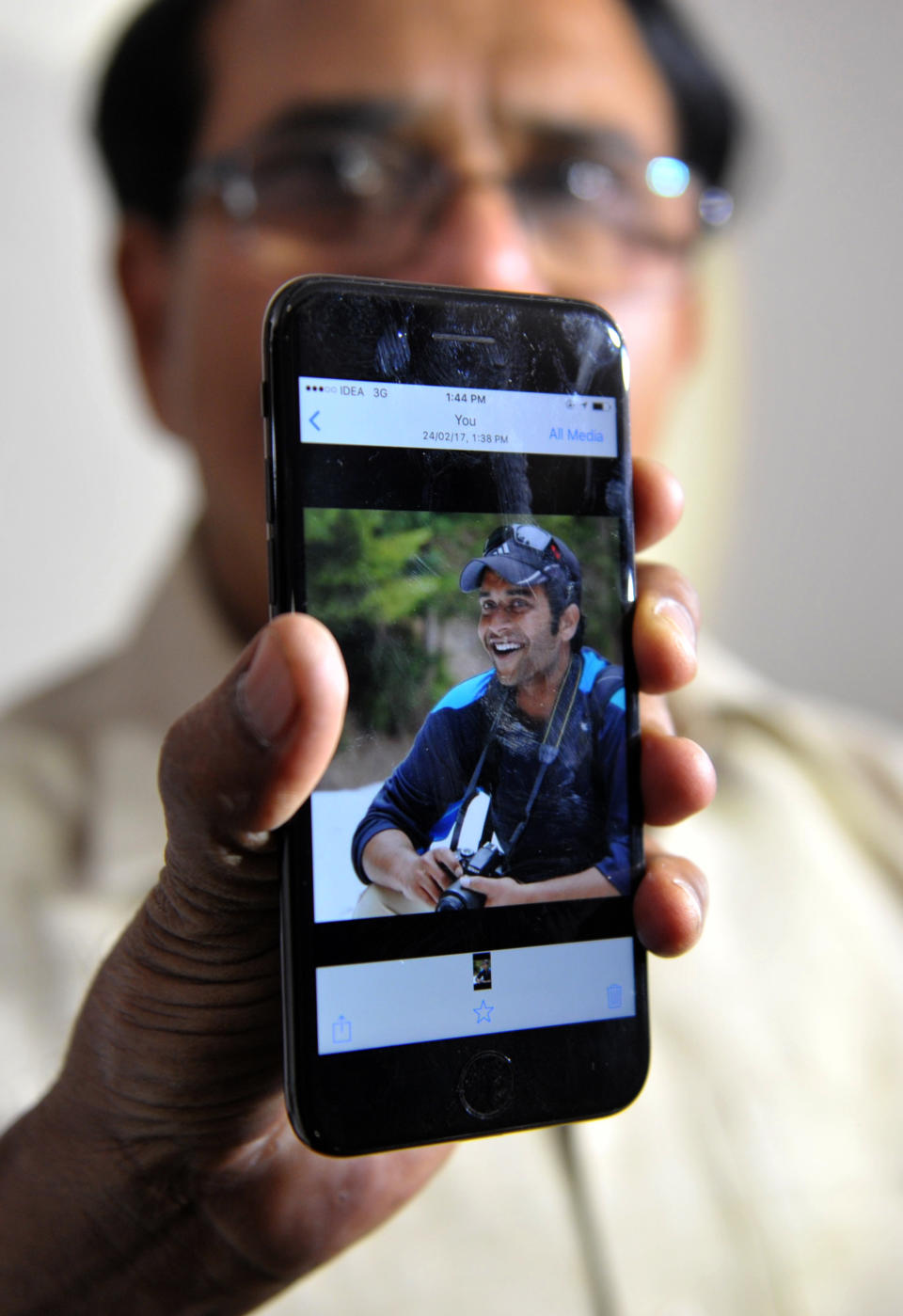Kansas Victim Was Indian, but That's Not the Point

On Wednesday, a white man in Kansas yelled "Get out of my country" before shooting at two Indian men in a bar. He killed one, Srinivas Kuchibhotla, and injured Kuchibhotla's friend, Alok Madasani, as well as bystander Ian Grillot, who tried to intervene. It's a tragic story that lies at the intersection of violence, immigration, racism, and politics. It also highlights the importance of how we talk about immigrants and victims of color.
Many news outlets have latched on to a particular part of the story: After fleeing the scene, shooter Adam Purinton told a bartender that he was hiding out because he had killed two "Middle Eastern" men. While it's important to note the attack was racially motivated, there are no shortage of outlets making "Man Thought He Was Shooting Two Middle Eastern Men" the crux of the story. What headlines like this imply is that the shooting is especially tragic because the victims were actually Indian (not Middle Eastern), not because they were, well, victims.
This focus shift happened a lot post 9/11, when a spate of hate crimes against anyone vaguely resembling the attackers plagued the United States. Narratives circled around how the victims were actually Sikh, or Hindu, or not from the countries the attackers were from, as if, had the victims been Muslim, the attack would have made more sense.

This instance of a man killing the "wrong" kind of victim is especially troubling because it leans upon stereotypes of the "better" kind of brown person to have in this country. Many reports of this recent crime also rely on commentary from friends and family of the victims espousing how smart and well-mannered Kuchibhotla was. The Kansas City Star lists his advanced degrees, and a friend of his told the Washington Post he was "levelheaded and technically skilled." Humanizing details like this tend to be part of any murder story, but they take on a different tone when the victim was an immigrant and the target of a hate crime.
Indians are one of several racial minorities in America who fall victim to the model-minority myth, which is rooted in other forms of racism. "The model-minority designation suggests that Asian Americans are succeeding by conventional American standards," Adia Harvey Wingfield wrote for The Atlantic. Model minorities are the "desirable" immigrants who are hardworking, respectful, and, most importantly, ready to assimilate.
The current immigration conversation is rife with impassioned arguments about these sorts of immigrants―and they seem harmless enough. Arguments focus on how hard immigrants work, how the American economy would collapse if it weren't for immigrants, and how the next Einstein could be a Syrian girl turned away from our shores. Though the model-minority narrative administers certain privileges, it can also mask a bigger problem: Even as it celebrates, it doesn't protect its recipients from xenophobic violence that still festers, especially under an administration that's been hostile to immigrants of any kind.
The tragedy of Kuchibhotla is not that the life of an accomplished engineer, or a kind person, or Indian, was cut short―though he was all those things. His death would have been as much of a tragedy if he were unemployed, undocumented, and Muslim. The abrupt, violent end of a life is a tragedy no matter what.
You Might Also Like

